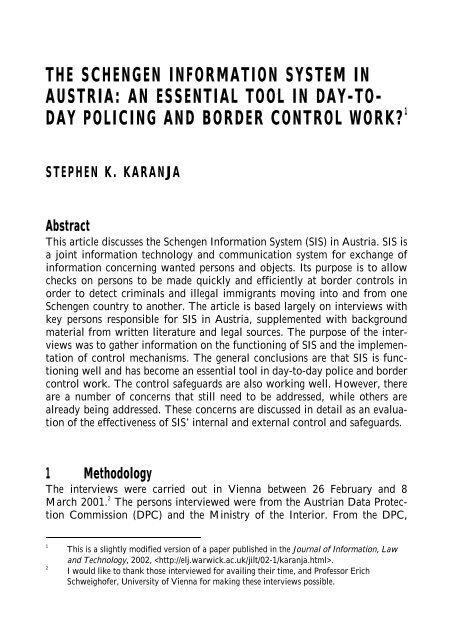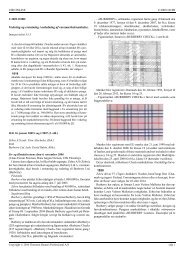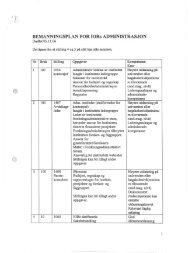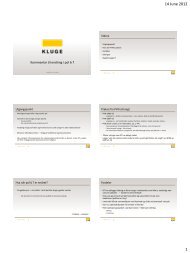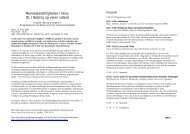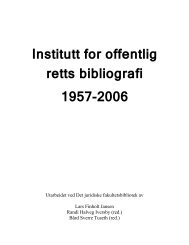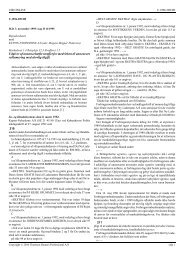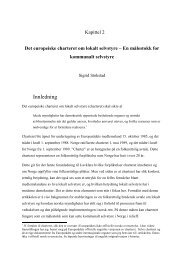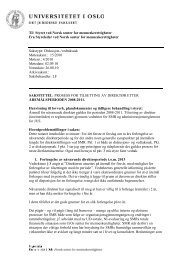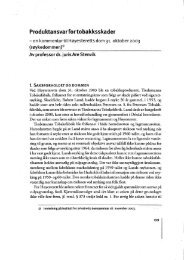Lee A. Bygrave (red.) YULEX 2002 - Universitetet i Oslo
Lee A. Bygrave (red.) YULEX 2002 - Universitetet i Oslo
Lee A. Bygrave (red.) YULEX 2002 - Universitetet i Oslo
You also want an ePaper? Increase the reach of your titles
YUMPU automatically turns print PDFs into web optimized ePapers that Google loves.
THE SCHENGEN INFORMATION SYSTEM IN<br />
AUSTRIA: AN ESSENTIAL TOOL IN DAY-TO-<br />
DAY POLICING AND BORDER CONTROL WORK? 1<br />
STEPHEN K. KARANJA<br />
Abstract<br />
This article discusses the Schengen Information System (SIS) in Austria. SIS is<br />
a joint information technology and communication system for exchange of<br />
information concerning wanted persons and objects. Its purpose is to allow<br />
checks on persons to be made quickly and efficiently at border controls in<br />
order to detect criminals and illegal immigrants moving into and from one<br />
Schengen country to another. The article is based largely on interviews with<br />
key persons responsible for SIS in Austria, supplemented with background<br />
material from written literature and legal sources. The purpose of the interviews<br />
was to gather information on the functioning of SIS and the implementation<br />
of control mechanisms. The general conclusions are that SIS is functioning<br />
well and has become an essential tool in day-to-day police and border<br />
control work. The control safeguards are also working well. However, there<br />
are a number of concerns that still need to be addressed, while others are<br />
already being addressed. These concerns are discussed in detail as an evaluation<br />
of the effectiveness of SIS’ internal and external control and safeguards.<br />
1 Methodology<br />
The interviews were carried out in Vienna between 26 February and 8<br />
March 2001. 2 The persons interviewed were from the Austrian Data Protection<br />
Commission (DPC) and the Ministry of the Interior. From the DPC,<br />
1<br />
This is a slightly modified version of a paper published in the Journal of Information, Law<br />
and Technology, <strong>2002</strong>, .<br />
2<br />
I would like to thank those interviewed for availing their time, and Professor Erich<br />
Schweighofer, University of Vienna for making these interviews possible.


